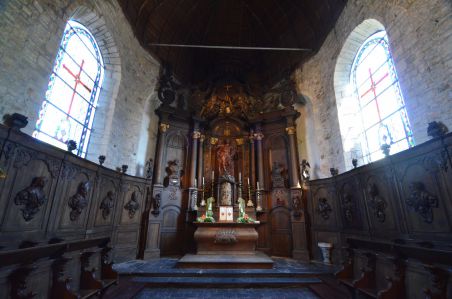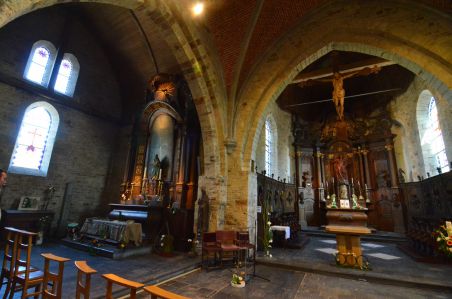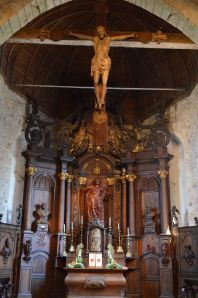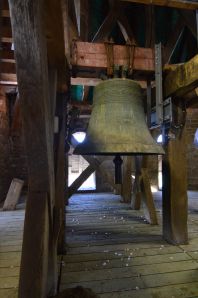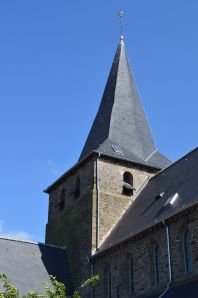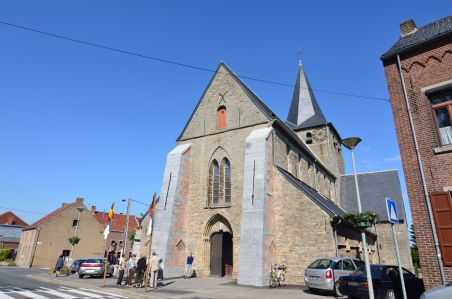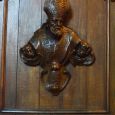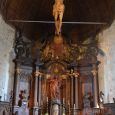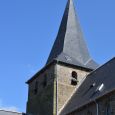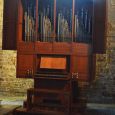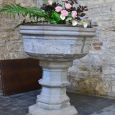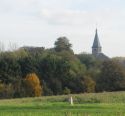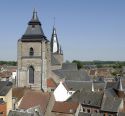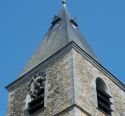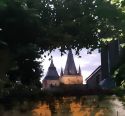Church | 1250 | Romanesque | Catholic Church



Map
Opening hours
01 June - 30 September
Mon -
Tue -
Wed -
Thu -
Fri -
Sat 14.00 - 20.00
Sun 14.00 - 18.00
Religious offices
Saturday : 6.30 pm
Description
On an ancient Roman road, this very old (13th century) church in local quarried sandstone dedicated to the Virgin has both Romanesque and Gothic elements.
The original wooden framework was renovated in 2010. Modern dendrology has been able to date most of its oak to 1267.
The choir is composed of stalls and a high altar, which came from the abbey of Cambron- Casteau. The local blue stone is omnipresent in the baptismal fonts, the holy water font, the paving stones and the tombstones. There is also a pulpit, two Louis XV confessionals and a 16th century benevolent God of Mercy.
KIKIRPA : Photo-library online
Photos
Remarkable elements
Choir panelling
The side walls of the choir are covered with magnificent panelling. Each panelling consists of six oak panels, or panels that appear to be so, in the Regency or Louis XV (18th century) style. The exact origin of these panelling is not known, but they may have been recovered from the furniture of a now defunct abbey, Saint Pierre d'Hasnon Abbey, near Valenciennes.
The panelling includes busts in relief of the evangelists Saint John, Saint Luke, Saint Matthew, Saint Mark and the Fathers of the church: Saint Augustine of Hippo - Saint Eloi of Noyon - Saint Gregory the Great (Pope) - Saint Jerome of Stridon (Cardinal) - Saint Hubert of Liege - Saint Ambrose of Milan.Translated with www.DeepL.com/Translator
Statues
In the middle of the main altar is the statue of Our Lady Ascension, placed in the middle of a false altarpiece, bordered by six Corinthian columns.
The niches on the sides represent the busts of the apostles St. Peter and St. Paul of Tarsus. Flanked by two putti's, are the two statues of Saint Roch and Saint Anthony Abbot. The upper part contains an image of the Holy Trinity where the God the Father in all his majesty holds a globe in his left hand and, on his left, the Christ, dressed in a tunic, but with bare upper body.
Massive tower
At the intersection of the transept, there is the massive tower, which of course is part of the most ancient part of the building. Its construction probably dates back to the first half of the XIIIth century. It probably served as a refuge for the inhabitants of the village in order to escape from the itinerant gangs that regularly threatened the villages. Access to the first floor of the tower was through a secret door and was in the choir.
The transepts of the transept consist of later additions to the building, which give the shape of a Latin cross. The crossing is open above a crossbow in red bricks and inspired by the Gothic style.
Organ
L’orgue à tuyaux, situé dans le transept sud, comporte deux claviers de 56 notes, un pédalier de 30 notes et 14 jeux réels.
Il a été fabriqué par Patrick Collon en 1969 pour le compte de la Manufacture d'orgues de Laeken. Il était destiné initialement à la formation des organistes par Jean Defèche, professeur d’orgue à l’Académie de Musique et au Conservatoire Royal de Mons et titulaire des grandes orgues de Sainte-Waudru à Mons pendant 33 ans. C’est en 2011 qu’il a été installé en l’église de la Sainte Vierge à l’initiative de l’abbé José Bouchez, par la Manufacture d’Orgues Thomas de Stavelot.
Fonts
Les fonts baptismaux sont constitués d’une colonne en pierre bleue calcaire terminée par une cuve de forme octogonale, le tout reposant sur un socle sculpté. Réalisés en style gothique hennuyer, ils sont datés du XVe siècle. La cuve des fonts est recouverte d’un couvercle en bois de facture récente.
Tombstone of Mrs Elisabeth de Laire
Under the intersection of the transept is the oldest tombstone of the Soignies entity. This is the tombstone of the Lady Elisabeth of Laire, whose death dates back to 1264. On the stone is engraved a representation at the foot of the lady, placed in the centre of a stylized religious aedicula. She has been discreetly watching over the church for more than seven centuries. Although of small nobility, she is elegantly dressed in an ample dress, surmounted by a rich coat held on her shoulders and holds a prayer book in her hand.
Nearby
Circuit
The Middle Ages in the Haute Senne region ( from Soignies to Horrues)
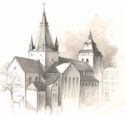
You will discover the Romanesque collegiate church and meet Saint Vincent. At Chaussée-Notre-Dame, it is the Lady of Laire who will be waiting for you. But before you get there, you can admire the landscape of the Haute Senne. Finally, in Horrues, you will learn more about Saint Martin, Saint Hubert and their emblematic animals.
The Middle Ages in the Haute Senne region (full circuit)
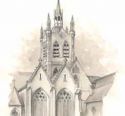
Proudly erected for centuries, churches are witnesses to local history. With castles and farms, they tell about an era and its customs. Are you more of a car person? Our fourth route offers you all the buildings in the program. A great way to learn everything about the region!




